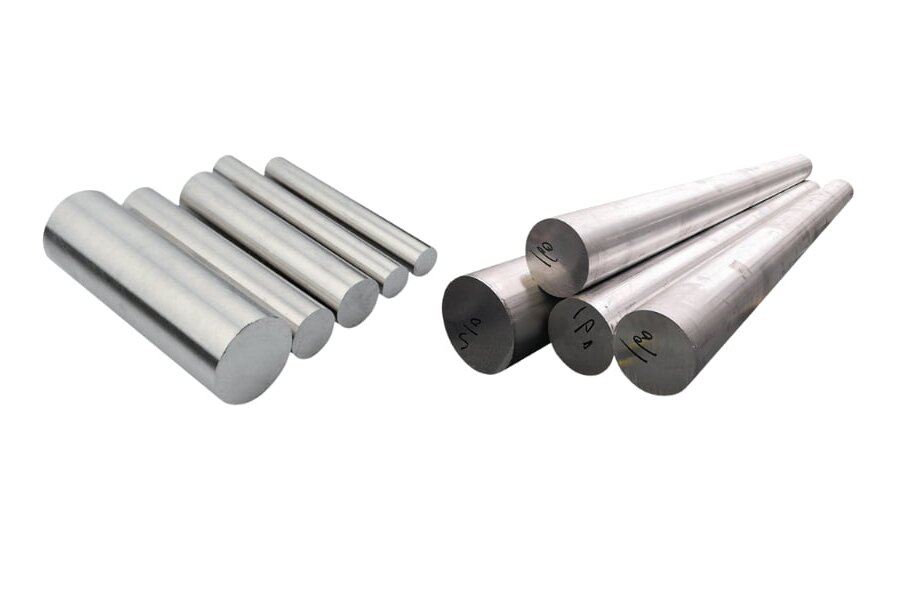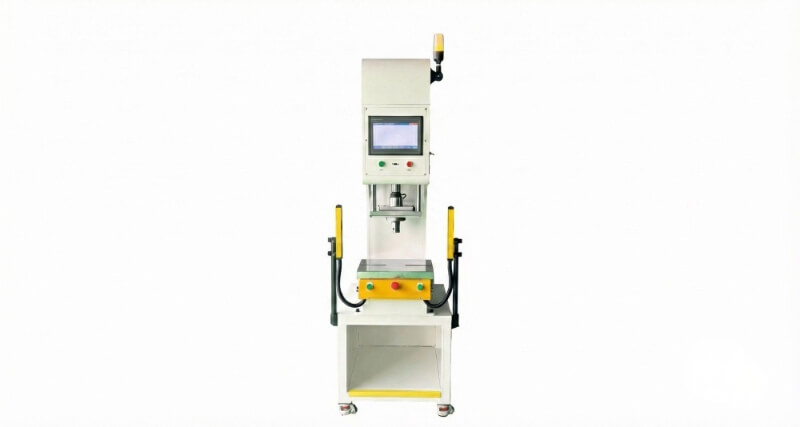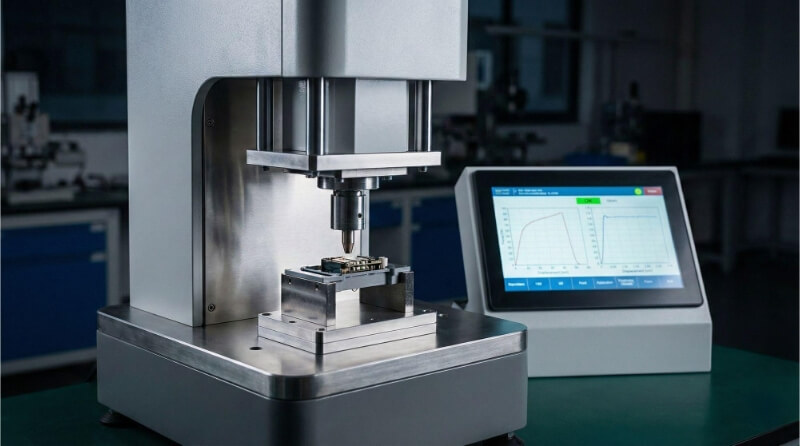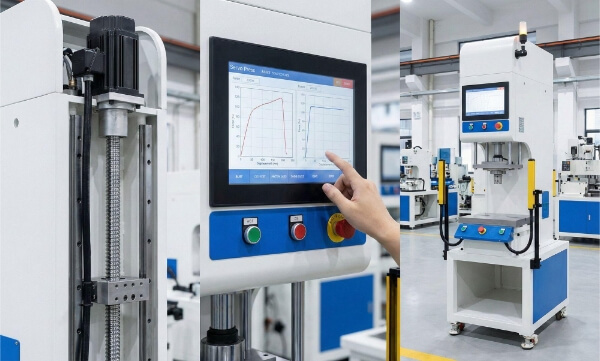Metal selection can make or break your project. Choose wrong, and you need to avoid costly mistakes and subpar results. But pick the suitable metal, and you’ll unlock a world of possibilities. Aluminum and steel are two popular options, each with unique strengths. So which one should you use?
Aluminum shines in lightweight applications and corrosion resistance, while steel excels in strength and cost-effectiveness. Both metals have their place in modern manufacturing and design. Your choice depends on your project needs, budget constraints, and performance requirements.
Let’s explore the key differences between aluminum and steel. We’ll compare their properties, applications, and pros and cons to help you decide on your next project.

Aluminum vs. Steel: Understanding the Basics
Aluminum: Its Properties, Formation, and Advantages
Aluminum is a lightweight, silvery-white metal. It’s the third most abundant element in the Earth’s crust. We extract it from bauxite ore through a process called electrolysis. This method separates aluminum from oxygen atoms in the ore.
Aluminum boasts several vital properties. It’s lightweight, with a density of about one-third that of steel. This makes it ideal for applications where weight matters. The metal also resists corrosion well. When exposed to air, it forms a thin oxide layer, protecting the underlying metal.
Other advantages of aluminum include its high thermal and electrical conductivity. It’s also non-magnetic and non-toxic. These properties make it versatile for various industries.
Steel: Its Properties, Formation, and Advantages
Steel is an alloy of iron and carbon. We create it by heating iron ore in a blast furnace and adding carbon. The amount of carbon affects steel’s properties. More carbon generally means higher strength but less flexibility.
Steel’s standout feature is its strength. Its high tensile strength makes it resistant to stretching and breaking. Steel also maintains its strength at high temperatures better than aluminum.
Steel offers good formability and weldability. It’s relatively easy to shape and join. The metal is also highly recyclable, which is a significant environmental advantage. Steel’s magnetic properties make it useful in electrical applications.
Aluminum vs. Steel: Comparative Analysis
Weight
Weight is a crucial factor in many engineering and design decisions. Aluminum takes the lead here. It’s about one-third the weight of steel for the same volume. This makes aluminum the go-to choice for industries like aerospace and automotive.
In transportation, lighter materials mean better fuel efficiency. Aluminum’s low density allows for larger structures without excessive weight gain. This is why you’ll often see aluminum in aircraft bodies and car panels.
However, the higher weight of steel is only sometimes a disadvantage. The extra mass provides stability and anchoring in some applications, like building foundations or heavy machinery.
Strength
When it comes to strength, steel is the heavyweight champion. It boasts higher tensile strength than aluminum, which can withstand more stress before breaking. This makes steel ideal for load-bearing structures and high-stress applications.
Steel’s strength-to-weight ratio is impressive. Even though it’s heavier, it often requires less material to achieve the same structural integrity as aluminum. This can offset its weight disadvantage in some scenarios.
Aluminum isn’t weak by any means. Many aluminum alloys offer excellent strength for their weight. However, steel usually comes out on top for applications where absolute strength is paramount.
Malleability
Both aluminum and steel are malleable metals, but they behave differently. Aluminum is generally more pliable than steel. It’s easier to form complex shapes without cracking or breaking. This property makes aluminum popular in industries requiring intricate designs or thin-walled parts.
Steel, while less malleable than aluminum, still offers good formability. Its malleability can be adjusted through various alloying elements and heat treatments. This versatility allows steel to be tailored for specific forming processes.
Aluminum’s higher malleability can be advantageous in manufacturing processes like stamping and extrusion. It often requires less force to shape, potentially reducing tooling costs and energy consumption.
Thermal Conductivity
Aluminum outperforms steel in thermal conductivity. It transfers heat more efficiently, making it an excellent choice for heat exchangers and cooling systems. This property is why you often find aluminum in radiators and air conditioning units.
Steel’s lower thermal conductivity can be an advantage in some scenarios. It’s better at insulating against temperature changes. Steel is a good choice for applications that want to maintain a consistent temperature, like in building construction.
In electronics, aluminum’s high thermal conductivity helps dissipate heat from components. This is crucial for preventing overheating in devices like laptops and smartphones.
Corrosion Resistance
Aluminum has a natural edge in corrosion resistance. When exposed to air, it forms a thin oxide layer that protects the underlying metal. This self-healing property makes aluminum highly resistant to rust and other forms of corrosion.
Steel, particularly carbon steel, is more prone to rusting when exposed to moisture and oxygen. However, stainless steel, an alloy containing chromium, offers excellent corrosion resistance. It forms a protective chromium oxide layer similar to aluminum’s oxide layer.
In marine environments or outdoor applications, aluminum’s corrosion resistance can lead to lower maintenance costs and longer product life. Steel often requires additional treatments or coatings for similar protection.
Cost
Steel generally wins in the cost department. It’s typically cheaper than aluminum regarding raw material cost and processing. This makes steel an attractive option for large-scale projects where budget is a primary concern.
Aluminum’s higher initial cost can be offset by its lower weight and better corrosion resistance in some applications. Over a product’s lifetime, aluminum may prove more cost-effective due to reduced maintenance and transportation costs.
The price difference between the two metals can fluctuate based on market conditions and global supply chains. It’s always worth checking current prices when making a decision.
Physical Properties Comparison
Let’s break down some critical physical properties:
- Density: Aluminum (2.7 g/cm³) vs Steel (7.85 g/cm³)
- Melting Point: Aluminum (660°C) vs Steel (1370-1530°C)
- Electrical Conductivity: Aluminum (37.7 million S/m) vs Steel (6.99 million S/m)
- Yield Strength: Aluminum (7-11 MPa) vs Steel (250-1000 MPa, depending on grade)
These differences highlight why material selection is so crucial. Each metal’s unique properties make it suited for different applications.
Aluminum vs. Steel: Quick Comparison
Here’s a quick comparison of aluminum and steel in a table format:
| Property | Aluminum | Steel |
|---|---|---|
| Weight | Lighter (1/3 the weight of steel) | Heavier |
| Strength | Good strength-to-weight ratio | Higher absolute strength |
| Malleability | More malleable | Less malleable, but still formable |
| Thermal Conductivity | Higher | Lower |
| Corrosion Resistance | Excellent (forms protective oxide layer) | Varies (carbon steel rusts, stainless steel resistant) |
| Cost | Generally more expensive | Usually cheaper |
| Density | 2.7 g/cm³ | 7.85 g/cm³ |
| Melting Point | 660°C | 1370-1530°C |
| Electrical Conductivity | 37.7 million S/m | 6.99 million S/m |
| Yield Strength | 7-11 MPa | 250-1000 MPa (varies by grade) |
Aluminum vs Steel: Applications
Aluminum and steel each have their sweet spots for real-world use. Let’s look at where these metals genuinely shine.
Aluminum takes the lead in:
- Aerospace: Its lightweight properties make it ideal for aircraft and spacecraft.
- Automotive: Car manufacturers use it to reduce vehicle weight and boost fuel efficiency.
- Electronics: You’ll find it in laptops, smartphones, and other portable devices.
- Packaging: Think beverage cans and food containers.
Steel dominates in:
- Construction: It’s the backbone of skyscrapers, bridges, and infrastructure.
- Heavy machinery: Excavators, cranes, and industrial equipment rely on steel’s strength.
- Appliances: Many household items like refrigerators and washing machines use steel.
- Tools: From wrenches to power tools, steel is the go-to material.
Both metals have their place in various industries. Your choice depends on the specific demands of your project.
Aluminum vs Steel: How to Choose the Right Alloy
Selecting a suitable alloy for your project is crucial. Here’s a guide to help you choose between aluminum and steel alloys:
Define your project requirements:
- Weight constraints
- Strength needs
- Corrosion resistance requirements
- Budget limitations
- Environmental conditions
- Fabrication methods
Consider aluminum alloys when you need them:
- Lightweight solutions (e.g., 6061-T6 for general-purpose use)
- Excellent corrosion resistance (e.g., 5052 for marine environments)
- High strength-to-weight ratio (e.g., 7075 for aerospace applications)
- Good thermal conductivity (e.g., 1100 for heat exchangers)
Opt for steel alloys when you require:
- High strength (e.g., 4140 for heavy-duty machinery)
- Cost-effectiveness (e.g., 1018 for general structural use)
- Magnetic properties (e.g., 430 stainless steel for magnetic applications)
- Heat resistance (e.g., 310 stainless steel for high-temperature environments)
Evaluate the manufacturing process:
- Welding requirements (both metals are weldable, but techniques differ)
- Machining needs (aluminum is generally more effortless to machine)
- Forming complexity (aluminum is more malleable)
Consider surface finish options:
- Anodizing for aluminum
- Galvanizing or powder coating for steel
Assess long-term maintenance:
- Aluminum’s natural corrosion resistance
- Steel’s need for protective coatings in some environments
Remember, the best choice often involves compromises. Weigh all factors carefully to find the optimal alloy for your specific application.
Conclusion
Aluminum and steel each have their strengths and ideal applications. Aluminum excels in lightweight, corrosion-resistant scenarios, while steel shines in high-strength, cost-effective applications. Your choice depends on your specific project needs, balancing weight, strength, cost, and environmental conditions. Both metals continue to play crucial roles in modern manufacturing and engineering.
Do you need a reliable sheet metal parts manufacturer? Shengen is the place to go. We specialize in sheet metal laser cutting, bending, surface finish, and CNC Machining. Reach out to Shengen Today and seek help from professionals!
FAQs
How do aluminum and steel perform in extreme weather conditions?
Aluminum performs better in cold and coastal environments due to its corrosion resistance. Steel can become brittle in extreme cold but handles high temperatures better than aluminum. Both metals can be treated or alloyed to improve their performance in harsh conditions.
What lasts longer, aluminum or steel?
Aluminum lasts longer in corrosive environments due to its natural oxide layer. However, certain types of steel, like stainless steel, can match or exceed aluminum’s longevity. The lifespan of both metals depends heavily on the specific environment and application.
Does aluminum crack easier than steel?
Aluminum is generally more prone to fatigue cracking than steel. However, it’s also more malleable, allowing it to bend without breaking. Steel’s higher tensile strength makes it more resistant to high-stress cracking.
How much stronger is steel vs. aluminum?
Steel is typically 2-3 times stronger than aluminum in tensile strength. However, aluminum’s strength-to-weight ratio can be superior in some applications. The exact strength difference depends on the specific alloys being compared.
Hey, I'm Kevin Lee

For the past 10 years, I’ve been immersed in various forms of sheet metal fabrication, sharing cool insights here from my experiences across diverse workshops.
Get in touch

Kevin Lee
I have over ten years of professional experience in sheet metal fabrication, specializing in laser cutting, bending, welding, and surface treatment techniques. As the Technical Director at Shengen, I am committed to solving complex manufacturing challenges and driving innovation and quality in each project.




